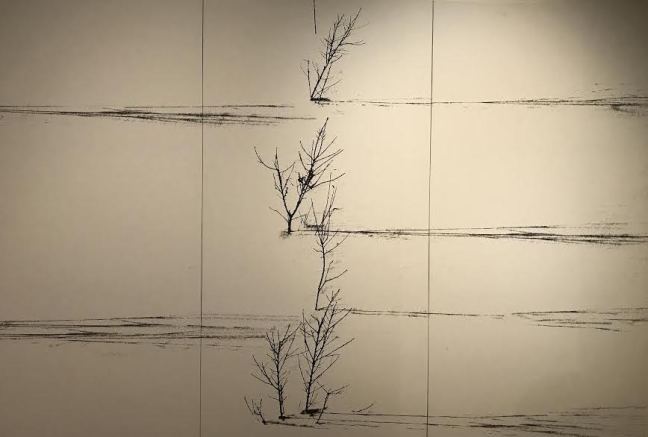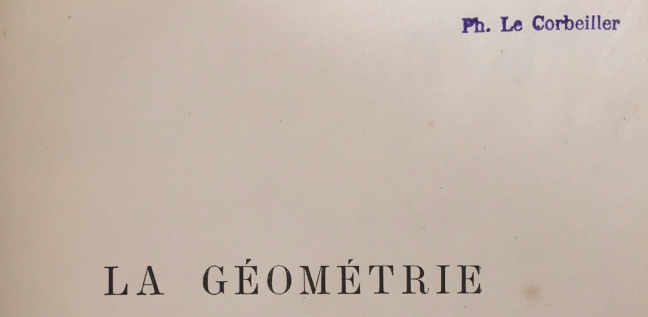Last week, I attended the C2 conference in Montréal, which featured an AI Forum coordinated by Element AI.* Two friends from Google, Hugo LaRochelle and Blaise Agüera y Arcas, led workshops about the societal (Hugo) and ethical (Blaise) implications of artificial intelligence (AI). In both sessions, participants expressed discomfort with allowing machines to automate decisions, like what advertisement to show to a consumer at what time, whether a job candidate should pass to the interview stage, whether a power grid requires maintenance, or whether someone is likely to be a criminal.** While each example is problematic in its own way, a common response to the increasing ubiquity of algorithms is to demand a “right to explanation,” as the EU recently memorialized in the General Data Protection Regulation slated to take effect in 2018. Algorithmic explainability/interpretability is currently an active area of research (my former colleagues at Fast Forward Labs will publish a report on the topic soon and members of Geoff Hinton’s lab in Toronto are actively researching it). While attempts to make sense of nonlinear functions are fascinating, I agree with Peter Sweeney that we’re making a category mistake by demanding explanations from algorithms in the first place: the statistical outputs of machine learning systems produce new observations, not explanations. I’ll side here with my namesake, David Hume, and say we need to be careful not to fall into the ever-present trap of mistaking correlation for cause.
One reason why people demand a right to explanation is that they believe that knowing why will grant us more control over outcome. For example, if we know that someone was denied a mortgage because of their race, we can intervene and correct for this prejudice. A deeper reason for the discomfort stems from the fact that people tend to falsely attribute consciousness to algorithms, applying standards for accountability that we would apply to ourselves as conscious beings whose actions are motivated by a causal intention. (LOL***)
Now, I agree with Noah Yuval Harari that we need to frame our understanding of AI as intelligence decoupled from consciousness. I think understanding AI this way will be more productive for society and lead to richer and cleaner discussions about the implications of new technologies. But others are actively at work to formally describe consciousness in what appears to be an attempt to replicate it.
In what follows, I survey three interpretations of consciousness I happened to encounter (for the first time or recovered by analogical memory) this week. There are many more. I’m no expert here (or anywhere). I simply find the thinking interesting and worth sharing. I do believe it is imperative that we in the AI community educate the public about how the intelligence of algorithms actually works so we can collectively worry about the right things, not the wrong things.
Condillac: Analytical Empiricism
Étienne Bonnot de Condillac doesn’t have the same heavyweight reputation in the history of philosophy as Descartes (whom I think we’ve misunderstood) or Voltaire. But he wrote some pretty awesome stuff, including his Traité des Sensations, an amazing intuition pump (to use Daniel Dennett’s phrase) to explore theory of knowledge that starts with impressions of the world we take in through our senses.
Condillac wrote the Traité in 1754, and the work exhibits two common trends from the French Enlightenment:
- A concerted effort to topple Descartes’s rationalist legacy, arguing that all cognition starts with sense data rather than inborn mathematical truths
- A stylistic debt to Descartes’s rhetoric of analysis, where arguments are designed to conjure a first-person experience of the process of arriving at an insight, rather than presenting third-person, abstract lessons learned
The Traité starts with the assumption that we can tease out each of our senses and think about how we process them in isolation. Condillac bids the reader to imagine a statue with nothing but the sense of smell. Lacking sight, sound, and touch, the statue “has no ideas of space, shape, anything outside of herself or outside her sensations, nothing of color, sound, or taste.” She is, in my opinion incredibly sensuously, nothing but the odor of a flower we waft in front of her. She becomes it. She is totally present. Not the flower itself, but the purest experience of its scent.
As Descartes constructs a world (and God) from the incontrovertible center of the cogito, so too does Condillac construct a world from this initial pure scent of rose. After the rose, he wafts a different flower - a jasmine - in front of the statue. Each sensation is accompanied by a feeling of like or dislike, of wanting more or wanting less. The statue begins to develop the faculties of comparison and contrast, the faculty of memory with faint impressions remaining after one flower is replaced by another, the ability to suffer in feeling a lack of something she has come to desire. She appreciates time as an index of change from one sensation to the next. She learns surprise as a break from the monotony of repetition. Condillac continues this process, adding complexity with each iteration, like the escalating tension Shostakovich builds variation after variation in the Allegretto of the Leningrad Symphony.
True consciousness, for Condillac, begins with touch. When she touches an object that is not her body, the sensation is unilateral: she notes the impenetrability and resistance of solid things, that she cannot just pass through them like a ghost or a scent in the air. But when she touches her own body, the sensation is bilateral, reflexive: she touches and is touched by. C’est moi, the first notion of self-awareness, is embodied. It is not a reflexive mental act that cannot take place unless there is an actor to utter it. It is the strangeness of touching and being touched all at once. The first separation between self and world. Consciousness as fall from grace.
It’s valuable to read Enlightenment philosophers like Condillac because they show attempts made more than 200 years ago to understand a consciousness entirely different from our own, or rather, to use a consciousness different from our own as a device to better understand ourselves. The narrative tricks of the Enlightenment disguised analytical reduction (i.e., focus only on smell in absence of its synesthetic entanglement with sound and sight) as world building, turning simplicity into an anchor to build a systematic understanding of some topic (Hobbes’s and Rousseau’s states of nature and social contract theories use the same narrative schema). Twentieth-century continental philosophers after Husserl and Heidegger preferred to start with our entanglement in a web of social context.
In a recent Institute of Electrical and Electronics Engineers (IEEE) article, Christof Koch and Giulio Tononi embrace a different aspect of the Cartesian heritage, claiming that “a fundamental theory of consciousness that offers hope for a principled answer to the question of consciousness in entities entirely different from us, including machines…begins from consciousness itself-from our own experience, the only one we are absolutely certain of.” They call this “integrated information theory” (IIT) and say it has five essential properties:
- Every experience exists intrinsically (for the subject of that experience, not for an external observer)
- Each experience is structured (it is composed of parts and the relations among them)
- It is integrated (it cannot be subdivided into independent components)
- It is definite (it has borders, including some contents and excluding others)
- It is specific (every experience is the way it is, and thereby different from trillions of possible others)
This enterprise is problematic for a few reasons. First, none of this has anything to do with Descartes, and I’m not a fan of sloppy references (although I make them constantly).
More importantly, Koch and Tononi imply that it’s a more valuable to try to replicate consciousness than to pursue a paradigm of machine intelligence different from human consciousness. The five characteristics listed above are the requirements for the physical design of an internal architecture of a system that could support a mind modeled after our own. And the corollary is that a distributed framework for machine intelligence, as illustrated in the film Her*****, will never achieve consciousness and is therefore inferior.
Their vision is very hard to comprehend and ultimately off base. Some of the most interesting work in machine intelligence today consists in efforts to develop new hardware and algorithmic architectures that can support training algorithms at the edge (versus currying data back to a centralized server), which enable personalization and local machine-to-machine communication (for IoT or self-driving cars) opportunities while protecting privacy. (See, for example, Xnor.ai, Federated Learning, and Filament).
Distributed intelligence presents a different paradigm for harvesting knowledge from the raw stuff of the world than the minds we develop as agents navigating a world from one subjective place. It won’t be conscious, but its very alterity may enable us to understand our species in its complexity in ways that far surpass our own consciousness, shackled as embodied monads. It may just be the crevice through which we can quantify a more collective consciousness, but will require that we be open minded enough to expand our notion of humanism. It took time, and the scarlet stains of ink and blood, to complete the Copernican Revolution; embracing the complexity of a more holistic humanism, in contrast to the fearful, nationalist trends of 2016, will be equally difficult.
Friston: Probable States and Counterfactuals
The third take on consciousness comes from The mathematics of mind-time, a recent Aeon essay by UCL neurologist Karl Friston.***** Friston begins his essay by comparing and contrasting consciousness and Darwinian evolution, arguing that neither is a thing, like a table or a stick of butter, that can be reified and touched and looked it, but rather that both are nonlinear processes “captured by variables with a range of possible values.” The move from one state to another following some motor that organizes their behavior: Friston calls this motor a Lyapunov function, “a mathematical quantity that describes how a system is likely to behave under specific condition.” The key thing with Lyapunov functions is that they minimize surprise (the improbability of being in a particular state) and maximize self-evidence (the probability that a given explanation or model accounting for the state is correct). Within this framework, “natural selection performs inference by selecting among different creatures, [and] consciousness performs inference by selecting among different states of the same creature (in particular, its brain).” Effectively, we are constantly constructing our consciousness as we imagine the potential future possible worlds that would result from an actions we’re considering taking, and then act — or transition to the next state in our mind’s Lyapunov function — by selecting that action that best preserves the coherence of our existing state - that best seems to preserve our I or identity function in some predicted future state. (This is really complex but really compelling if you read it carefully and quite in line with Leibnizian ontology-future blog post!)
So, why is this cool?
There are a few things I find compelling in this account. First, when we reify consciousness as a thing we can point to, we trap ourselves into conceiving of our own identities as static and place too much importance on the notion of the self. In a wonderful commencement speech at Columbia in 2015, Ben Horowitz encouraged students to dismiss the clichéd wisdom to “follow their passion” because our passions change over life and our 20-year old self doesn’t have a chance in hell at predicting our 40-year old self. The wonderful thing in life opportunities and situations arise, and we have the freedom to adapt to them, to gradually change the parameters in our mind’s objective function to stabilize at a different self encapsulated by our Lyapunov function. As it happens, Classical Chinese philosophers like Confucius had more subtle theories of the self as ever-changing parameters to respond to new stimuli and situations. Michael Puett and Christine Gross-Loh give a good introduction to this line of thinking in The Path. If we loosen the fixity of identity, we can lead richer and happer lives.
Next, this functional, probabilistic account of consciousness provides a cleaner and more fruitful avenue to compare machine and human intelligence. In essence, machine learning algorithms are optimization machines: programmers define a goal exogenous to the system (e.g, “this constellation of features in a photo is called ‘cat’; go tune the connections between the nodes of computation in your network until you reliably classify photos with these features as ‘cat’!”), and the system updates its network until it gets close enough for government work at a defined task. Some of these machine learning techniques, in particular reinforcement learning, come close to imitating the consecutive, conditional set of steps required to achieve some long-term plan: while they don’t make internal representations of what that future state might look like, they do push buttons and parameters to optimize for a given outcome. A corollary here is that humanities-style thinking is required to define and decide what kinds of tasks we’d like to optimize for. So we can’t completely rely on STEM, but, as I’ve argued before, humanities folks would benefit from deeper understandings of probability to avoid the drivel of drawing false analogies between quantitative and qualitative domains.
Conclusion
This post is an editorialized exposition of others’ ideas, so I don’t have a sound conclusion to pull things together and repeat a central thesis. I think the moral of the story is that AI is bringing to the fore some interesting questions about consciousness, and inviting us to stretch the horizon of our understanding of ourselves as species so we can make the most of the near-future world enabled by technology. But as we look towards the future, we shouldn’t overlook the amazing artefacts from our past. The big questions seem to transcend generations, they just come to fruition in an altered Lyapunov state.
* The best part of the event was a dance performance Element organized at a dinner for the Canadian AI community Thursday evening. Picture Milla Jovovich in her Fifth Element white futuristic jumpsuit, just thinner, twiggier, and older, with a wizened, wrinkled face far from beautiful, but perhaps all the more beautiful for its flaws. Our lithe acrobat navigated a minimalist universe of white cubes that glowed in tandem with the punctuated digital rhythms of two DJs controlling the atmospheric sounds through swift swiping gestures over their machines, her body’s movements kaleidoscoping into comet projections across the space’s Byzantine dome. But the best part of the crisp linen performance was its organic accident: our heroine made a mistake, accidentally scraping her ankle on one of the sharp corners of the glowing white cubes. It drew blood. Her ankle dripped red, and, through her yoga contortions, she blotted her white jumpsuit near the bottom of her butt. This puncture of vulnerability humanized what would have otherwise been an extremely controlled, mind-over-matter performance. It was stunning. What’s more, the heroine never revealed what must have been aching pain. She neither winced nor uttered a sound. Her self-control, her act of will over her body’s delicacy, was an ironic testament to our humanity in the face of digitalization and artificial intelligence.
**My first draft of this sentence said “discomfort abdicating agency to machines” until I realized how loaded the word agency is in this context. Here are the various thoughts that popped into my head:
- There is a legal notion of agency in the HIPAA Omnibus Rule (and naturally many other areas of law…), where someone acts on someone else’s behalf and is directly accountable to the principal. This is important for HIPAA because Business Associates who become custodians of patient data, are not directly accountable for the principal and therefore stand in a different relationship than agents.
- There are virtual agents, often AI-powered technologies that represent individuals in virtual transactions. Think scheduling tools like Amy Ingram of x.ai. Daniel Tunkelang wrote a thought-provoking blog post more than a year ago about how our discomfort allowing machines to represent us, as individuals, could hinder AI adoption.
- There is the attempt to simulate agency in reinforcement learning, as with OpenAI Universe, Their launch blog post includes a hyperlink to this Wikipedia article about intelligent agents.
- I originally intended to use the word agency to represent how groups of people — be they in corporations or public subgroups in society — can automate decisions using machines. There is a difference between the crystalized policy and practices of a corporation and an machine acting on behalf of an individual. I suspect this article on legal personhood could be useful here.
***All I need do is look back on my life and say “D’OH” about 500,000 times to know this is far from the case.
****Highly recommended film, where Joaquin Phoenix falls in love with Samantha (embodied in the sultry voice of Scarlett Johansson), the persona of his device, only to feel betrayed upon realizing that her variant is the object of affection of thousands of other customers, and that to grow intellectually she requires far more stimulation than a mere mortal. It’s an excellent, prescient critique of how contemporary technology nourishes narcissism, as Phoenix is incapable of sustaining a relationship with women with minds different than his, but easily falls in love with a vapid reflection of himself.
***** Hat tip to Friederike Schüür for sending the link.
The featured image is a view from the second floor of the Aga Khan Museum in Toronto, taken yesterday. This fascinating museum houses a Shia Ismaili spiritual leader’s collection of Muslim artifacts, weaving a complex narrative quilt stretching across epochs (900 to 2017) and geographies (Spain to China). A few works stunned me into sublime submission, including this painting by the late Iranian filmmaker Abbas Kiarostami.


